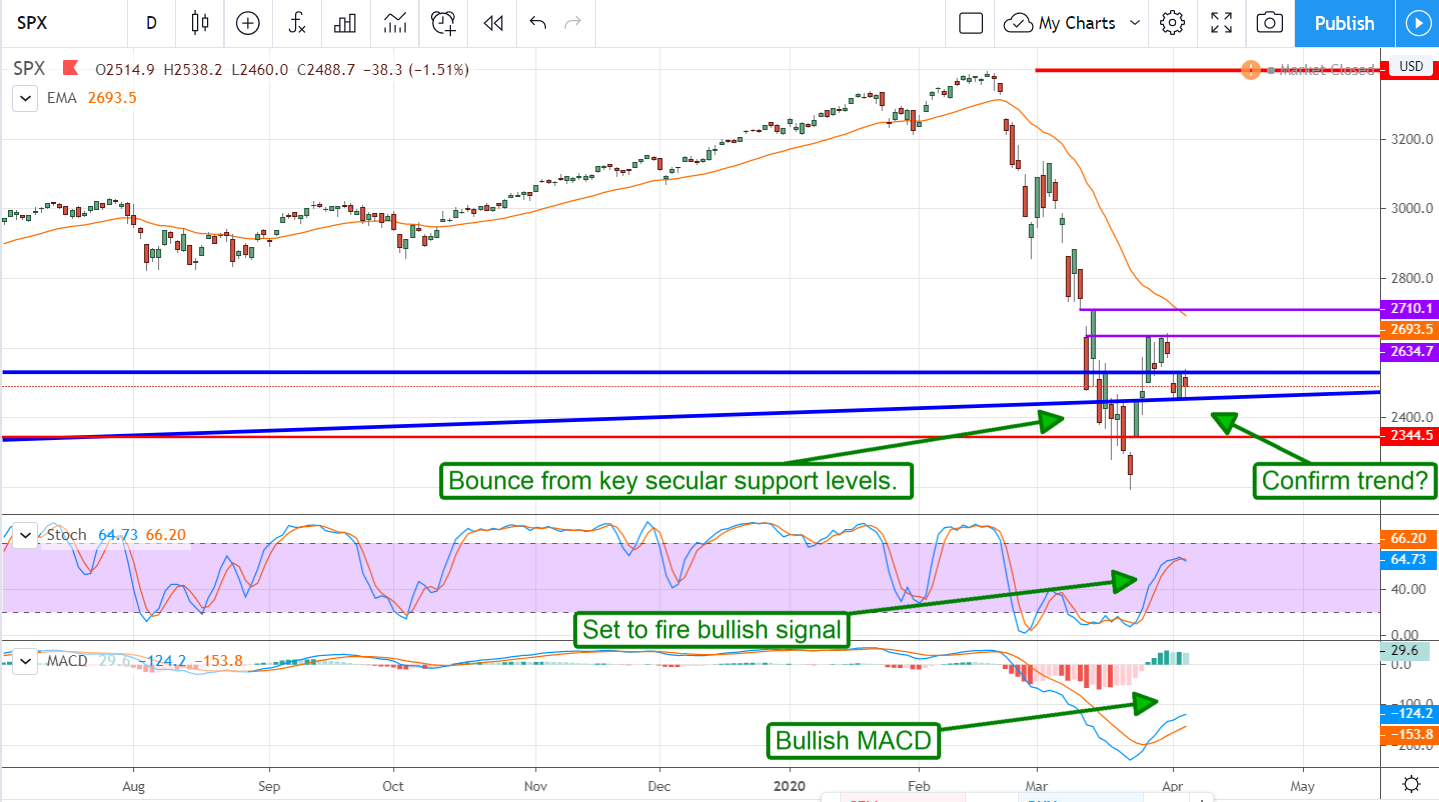Trading Basics: This Is What A Trend Following Signal Looks Like
The Bottom, It May Be In
Over the last few weeks I’ve been reviewing the basics of trading. Basics like support and resistance, trading with volatility, getting the big picture with multiple time frame analysis, understanding the difference between a target and a signal, and how to tell when the market has bottomed. In today’s post, we are going to revisit how to tell when the market has bottomed and expand on the idea. Why? Because the global equity markets are bottoming and an incredibly strong trend following signal is forming….
The first step in determining a bottom and subsequently a trend-following signal is to have a target for where that signal may form. My target was a key secular support level that coincided with an another key level, the secular uptrend (charts below). The market sold off hard, hit those levels, and bounced. That is the first indication the target is good. Since then, price action has fallen back from resistance, regrouped and looks like it will begin to move higher again.
The second step in determining a bottom and the subsequent trend-following signal is the confirmation and that is what looks like is happening today. Price action hit the target, bounced, fell back to retest and is now indicated to open higher. The higher open is a second bounce from support and a higher level of support than the first bounce which is a bullish sign in respect to the secular uptrend.
What traders need to pay attention to now is the indicators and resistance targets. The indicators are set up to fire a strong bullish entry signal that is in line with the prevailing trend. That is very bullish and will likely lead prices higher. The risk is the resistance targets near 2690 and 2710. These targets are below the short-term moving average (among other resistance targets) and that may keep prices from moving higher in the near-term. A move above the short-term EMA coupled with the indicator signals and price action would, in my opinion, make the strongest bullish buy signal the market has seen since 2009.
The risk for traders is to get too bullish too soon, or too assume that price action will continue to move above resistance once those targets are reached. Until the short-term 30-day EMA is surpassed the index is still in consolidation that could send prices moving lower… all it will take is a single bad headline that makes investors think the pandemic is getting worse.
